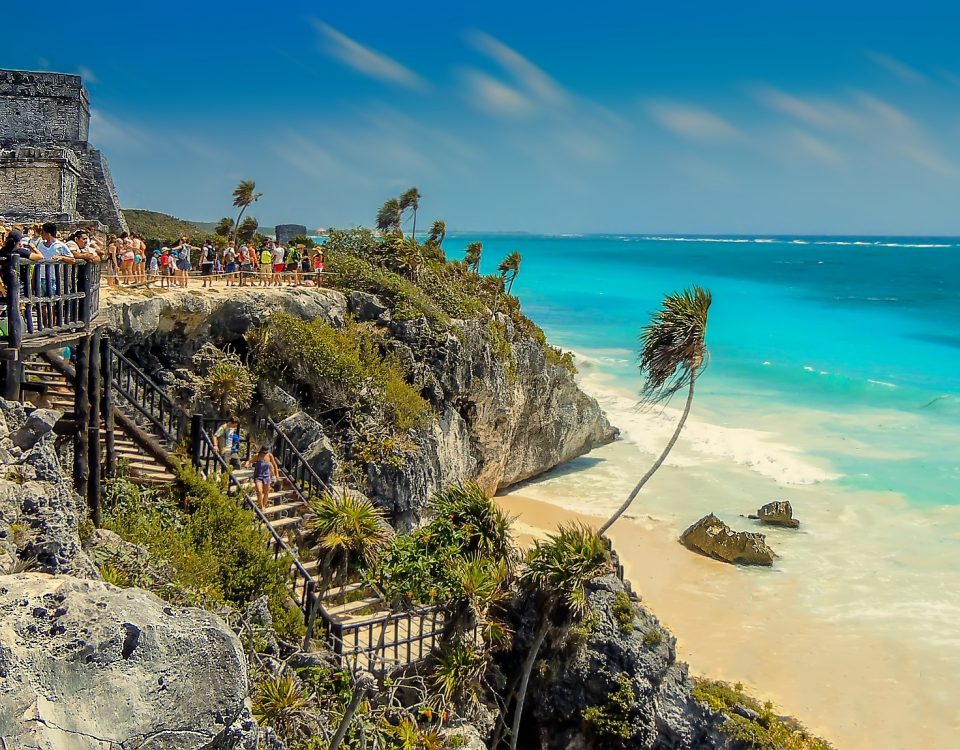2. Best Caribbean Coral Reefs for Divers
2.1. Tortugas, Playa del Carmen: One of the Best Caribbean Coral Reefs
Tortugas is the most popular coral reef in Playa del Carmen and one of the most famous in the Caribbean. It’s renowned not only for its beauty but also for the abundance of turtles that inhabit this marine ecosystem. It’s a unique spot where, in a single dive, you can encounter three iconic species of the Caribbean: the hawksbill turtle, the green turtle, and the majestic loggerhead turtle . This reef has become a natural sanctuary for these species, thanks to its rich biodiversity and ideal habitat.
At a depth of about 18 meters (60 feet), Tortugas is a “carpet” reef, characterized by its wide, flat formations. This type of structure promotes the growth of large quantities of marine sponges, a crucial food source for turtles. But turtles aren’t the only stars of this Caribbean coral reef; the area also hosts fascinating marine life, including moray eels, sharks, rays, and rare fish like the Orange Filefish, batfish, and spotted trumpetfish.
Furthermore, Tortugas offers unique natural spectacles depending on the season. During the warm months, from June to September, large schools of jacks gather at the reef’s edge, creating an unforgettable experience. In the colder months, from November to March, majestic bull sharks visit the area, adding excitement to every dive.
The currents here are typically moderate, though they can occasionally intensify, providing an exciting challenge for divers. From any of our bases along the Riviera Maya, you can explore this underwater paradise. Don’t miss out!
2.2. Palancar: The Star of the Caribbean Coral Reefs in Cozumel
Cozumel, home to some of the best Caribbean coral reefs, has been a world-renowned diving destination for over 40 years. Among its many underwater treasures, the Palancar reef stands out as one of the most spectacular. Located on the island’s western coast, Palancar benefits from steady ocean currents that bring essential nutrients for marine life.
Thanks to this richness, Palancar is home to sea turtles, rays, sharks, barracudas, moray eels, and a rainbow of tropical fish. The reef is divided into four main areas: Palancar Gardens, ideal for beginners and snorkelers, and Palancar Caves or Los Ladrillos, perfect for advanced divers looking for tunnels, caverns, and sloping walls filled with marine life.












